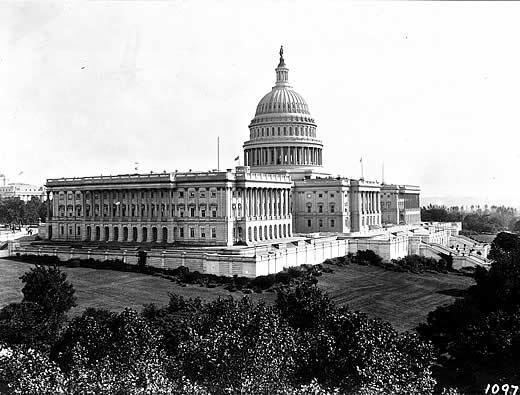Senate President Levi P. Morton (R) Senate Majority Republican | House Speaker Charles F. Crisp (D) House Majority Democratic | |
 | ||
Senate Pres. pro tem Charles F. Manderson (R) Members 88 Senators
332 Representatives
4 Non-voting members | ||
The Fifty-second United States Congress was a meeting of the legislative branch of the United States federal government, consisting of the United States Senate and the United States House of Representatives. It met in Washington, D.C. from March 4, 1891 to March 4, 1893, during the third and fourth years of Benjamin Harrison's presidency.
Contents
- Major legislation
- Party summary
- House of Representatives
- Senate
- Members
- Changes in membership
- Committees
- Joint committees
- Employees
- References
The apportionment of seats in the House of Representatives was based on the Tenth Census of the United States in 1880. The Senate had a Republican majority, and the House had a Democratic majority.
Major legislation
Party summary
The count below identifies party affiliations at the beginning of the first session of this Congress, and includes members from vacancies and newly admitted states, when they were first seated. Changes resulting from subsequent replacements are shown below in the "Changes in membership" section.
House of Representatives
TOTAL members: 332
Senate
House of Representatives
Members
This list is arranged by chamber, then by state. Senators are listed by class, and Representatives are listed by district.
Skip to House of Representatives, belowSenate
Senators were elected by the state legislatures every two years, with one-third beginning new six-year terms with each Congress. Senators are listed by Senate class numbers, which indicate the cycle of their election. In this Congress, Class 1 meant their term ended with this Congress, requiring re-election in 1892; Class 2 meant their term began in the last Congress, requiring re-election in 1894; and Class 3 meant their term began in this Congress, requiring re-election in 1896.
House of Representatives
Members of the House of Representatives are preceded by their district numbers.
Changes in membership
The count below reflects changes from the beginning of this Congress.
Senate
House of Representatives
Committees
Lists of committees and their party leaders.
